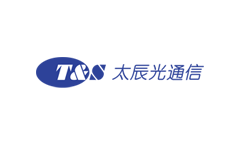What Are the Specific Classification Methods of Fiber Optical Products?

Optical fiber is the abbreviation of optical waveguide fiber. In Fiber Optical communication, fiber optical is usually simplified to Fiber. At present, there are many types of optical communications products, but there are roughly four types of classification methods, namely, classified according to the refractive index distribution of the profile of fiber optical, classified according to the propagation mode, classified according to the working wavelength, and classified according to the type of plastic coating, etc.
1. Fiber optical products are classified according to the refractive index distribution: Step fiber optical and graded fiber optical
Step-index Fiber means that in the fiber core and cladding regions, the refractive index distribution is uniform, and its values are n1 and n2, but at the boundary between the fiber core and the cladding, the change in refractive index is a step. Now, when single-mode fiber optical gradually replaces Multi-mode fiber optical and becomes the mainstream product of current fiber optical, the step-index fiber structure is once again one of the structural forms of single-mode optical fiber.
The so-called graded-index fiber means that the maximum refractive index is at the axis of the fiber optical, which decreases with the increase in the radial direction of the section. The change rule generally conforms to the parabolic law. When the boundary between the fiber core and the cladding is reached, it just drops to the same value as the refractive index of the region; the distribution of the refractive index in the cladding region is uniform.
2. Fiber optical products are classified by propagation mode: Multi-mode fiber optical and single-mode fiber optical
① Multi-mode optical fiber
Multi-mode fiber optical: The central glass core is thick (50 or 62.5μm), which can transmit multiple modes of light. However, the inter-mode dispersion is relatively large, which limits the frequency of the transmission of digital signals, which will become more serious with the increase in distance.
② Single-mode optical fiber
Single-mode fiber: the central glass core is very thin (the core diameter is generally 9 or 10μm), because it only allows one mode to propagate in it, thus avoiding the problem of mode dispersion. Therefore, single-mode fiber optical has an extremely wide bandwidth, which is especially suitable for large-capacity fiber optical communication.
3. Fiber optical products are classified by working wavelength: Short-wavelength fiber optical and Long-wavelength fiber optical
① Short-wavelength fiber
In the early days of the development of fiber optical communications, the wavelength of light waves used by people was in the range of 0.6 to 0.9 microns (the typical value is 0.85 microns). It is customary to call fiber optical products that exhibit low attenuation in this wavelength range as Short-wavelength fiber optical. Short-wavelength fiber optical is an early product and is rarely used at present.
② Long-wavelength fiber
With the continuous deepening of research work, it was found that the attenuation of the quartz fiber optical dropped sharply near the wavelengths of 1.31 microns and 1.55 microns. Not only that but also the material dispersion of the silica fiber optical in this wavelength range is greatly reduced. Therefore, people’s research work has shifted rapidly, and a fiber optical product in this range has been developed, which is called long-wavelength fiber optical. Long-wavelength fiber optical is especially suitable for long-distance, large-capacity fiber optical communication because of its low attenuation and wide bandwidth.
4. Fiber optical products are classified according to the type of plastic coating: Tight-buffered fiber optical and Loose-buffered fiber optical
① Tight-buffered fiber
The so-called tight-buffered optical fiber refers to the fiber in which the secondary and tertiary coating layer and the pre-coating layer and the core and cladding of the fiber are tightly combined. At present, this type of fiber optical is used most.
The attenuation-temperature characteristics of uncoated fiber optical are very good, but its temperature characteristics decrease after coating. This is because the expansion coefficient of the coating material is much higher than that of quartz, and it shrinks more severely at low temperatures, compressing the fiber optical to bend slightly, and increasing the attenuation of the fiber.
② Loose-buffered fiber
The so-called loose-buffered optical fiber means that the pre-coated fiber is loosely placed in a plastic tube, and no secondary or tertiary coating is carried out.
The manufacturing process of loose-buffered fiber optical is simple, and it's attenuation-temperature characteristics and mechanical properties are better than those of tight-buffered fiber, so more and more people pay attention to it.
- +1 Like
- Add to Favorites
Recommend
- How to Achieve Precise Connection of Optical Fibers with Fiber Connectors?
- OpDAT MV Highly Flexible Distributor Housing from METZ CONNECT is Designed for Fiber Optic and Copper Applications
- The Difference Between 100G QSFP28 Fiber Optical Transceiver and 100G CFP4 Fiber Optical Transceiver
- What is Passive Optical Network (PON) ?
- How to Plan the Future 5G Fiber Network?
- Fiber Optical PLC Splitters in Different Communication Network Structures
- What is the Minimum Bending Radius of an Optical Fiber Patchcord?
- Firecomms Fiber Optics for Consumer Network Applications
This document is provided by Sekorm Platform for VIP exclusive service. The copyright is owned by Sekorm. Without authorization, any medias, websites or individual are not allowed to reprint. When authorizing the reprint, the link of www.sekorm.com must be indicated.






























































































































































































































































































































































































































































































































































































































































































































































































































































































